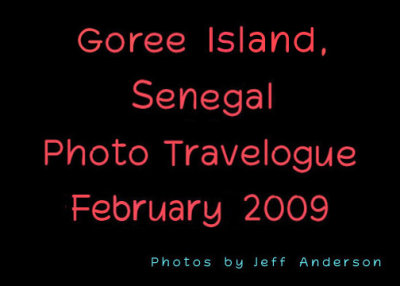
Goreé Island, Senegal cover page. |

Map of Senegal with the star indicating Goreé Island. |

The ferry terminal in Dakar where passengers embark for the 20 minute trip to Goreé Island. |

Passengers on the Goreé Island ferry. |

The ferry was crowded. Beautiful women ride on the boat trying to lure customers to their shops on the island. |

View of Goreé Island from the ferry. It is the area's most famous tourist attraction. |
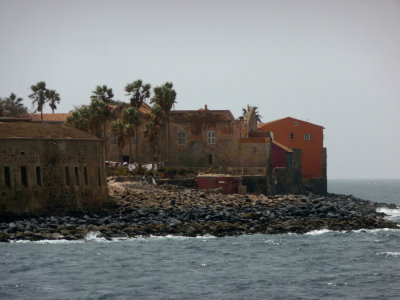
The rocky coastline of the island as the ferry was approaching. |
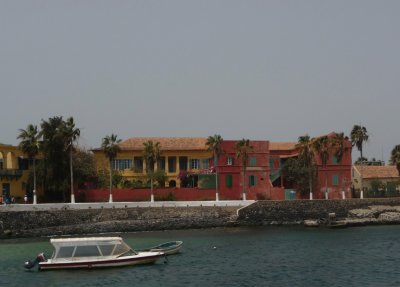
Boats were moored near the dock where we disembarked. |

The police station on Goreé Island. It used to be a chapel constructed by Portuguese navigators during the 15th century. |
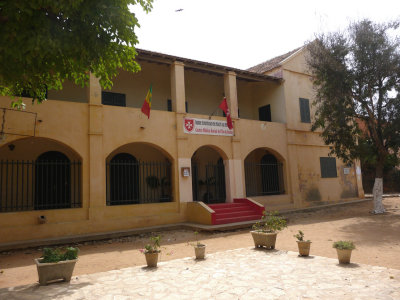
Medical office with the Senegal flag flying in front of it at Place de l'Eglise. |
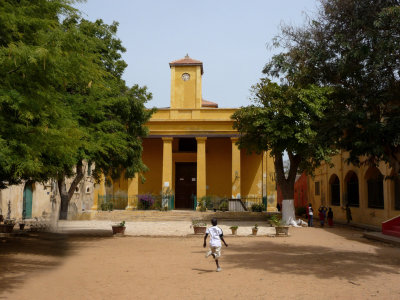
St. Charles Church on Place de l'Eglise (renamed Place du Cardinal Hyacinthe, after the Archbishop of Dakar). |

The church was built with public contributions in 1830 in the style of provincial churches in western France. |

Walkway on Goreé Island that leads up to St. Michael's Castle and to the the Slavery Monument. |

Along the pathway, artists were selling their work. |
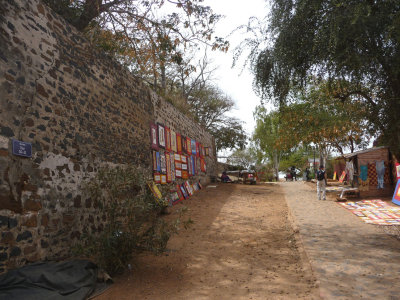
More artwork for sale along the path. |
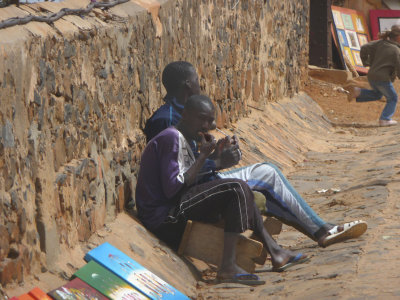
These two men were hoping to sell some of their paintings. |

Colorful artwork on display on the wall. |
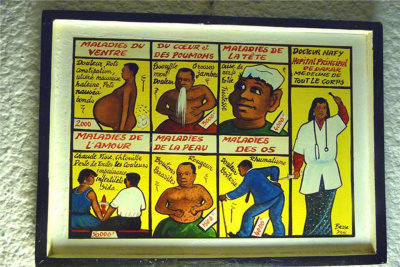
Humorous painting that I bought on Goreé Island. Fortunately, I needed no services of a doctor while there! |

A souvenir and craft shop on Goreé Island. |
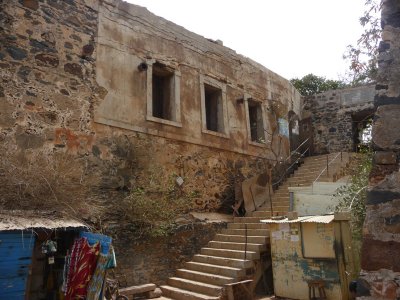
Steps leading alongside an ancient looking building. |

Artwork for sale in front of this house on Goreé Island. |
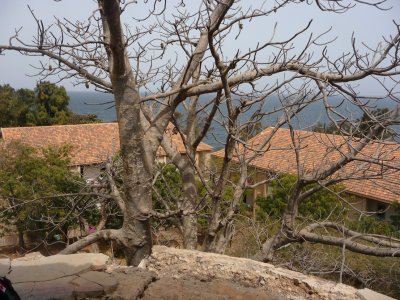
View of houses and of the harbor behind the trees. |
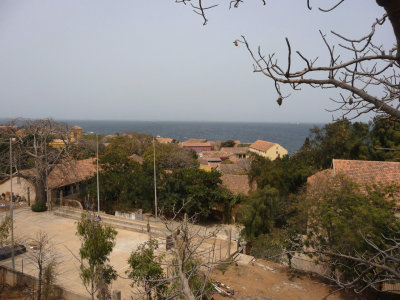
Colonial style houses with terra cotta rooftops. |
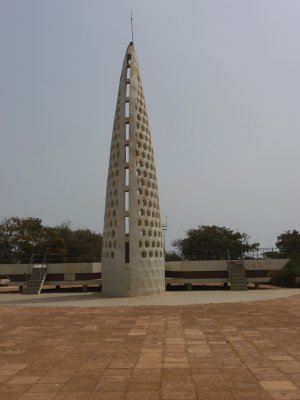
Concrete Slavery Monument on top of a hill. Many African Americans make pilgrimages here to come to terms with their past. |

Guns on the hill at Goreé Island near St. Michael's Castle. |
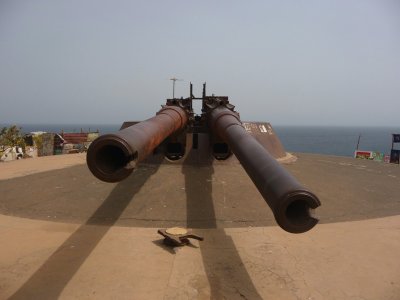
These guns were used for filming the movie, "The Guns of Navarone" in 1961. |
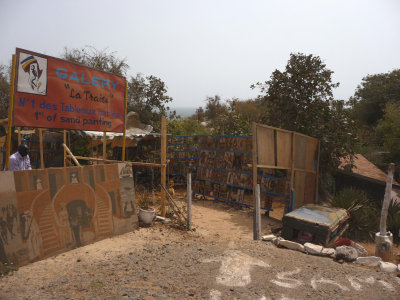
Art Gallery on top of the hill with sand paintings. |

Some of the sand paintings that were for sale. |

These carved wooden artifacts were also for sale. |

More paintings that were on display as I started down the hill on Goreé Island. |

Cows on along the pathway on the hill. |

Close-up of the cows. |
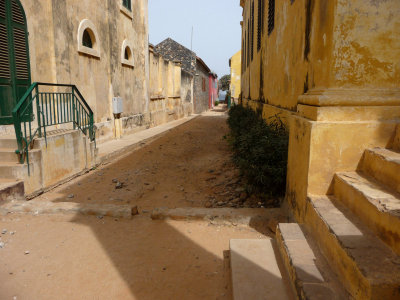
A dirt path on the lower part of the island. |

This stone house is obviously many centuries old. |

A pastel-colored house behind an interesting tree. |
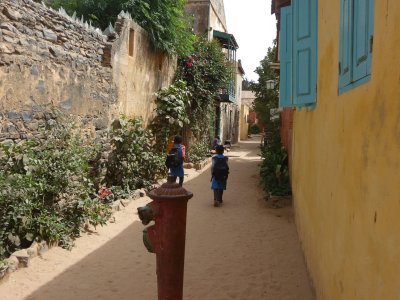
Children walking down a path. Many of the colonial houses on Goreé Island are painted in pastel colors. |
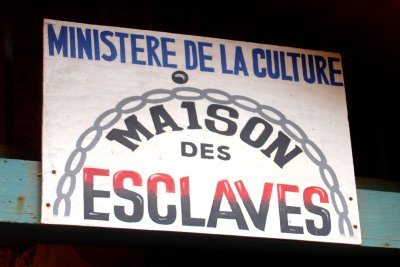
Sign for the Maison des Esclaves (House of Slaves), which was the shipping point for slaves going to the Americas. |
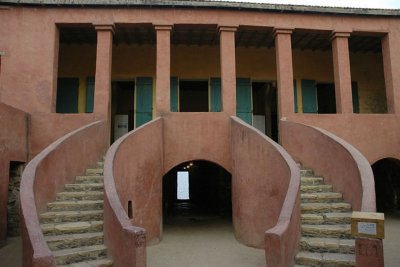
House of Slaves where shackled Africans were inprisoned. Only about 10% of them survived to make it the Americas. |
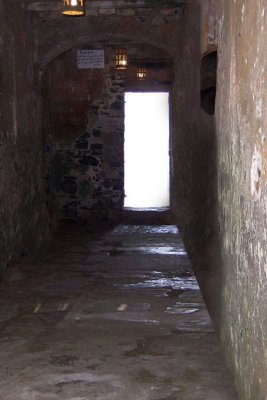
Interior of slave quarters where Africans were crowded into cells waiting to be transported. |
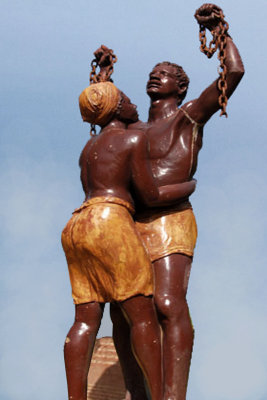
Slavery statue on Goreé Island symbolizing African slaves becoming unshackled. |











